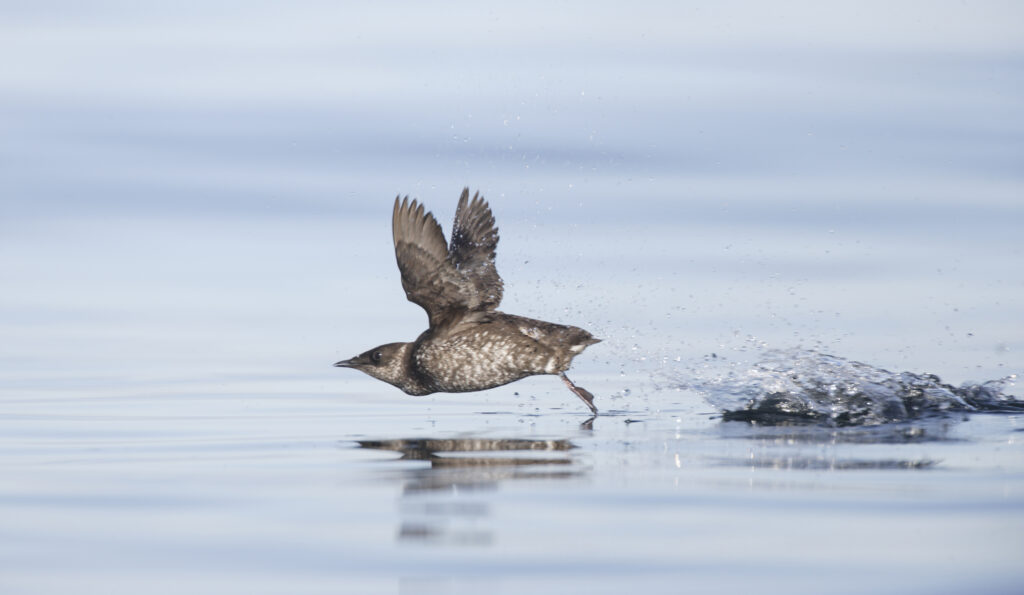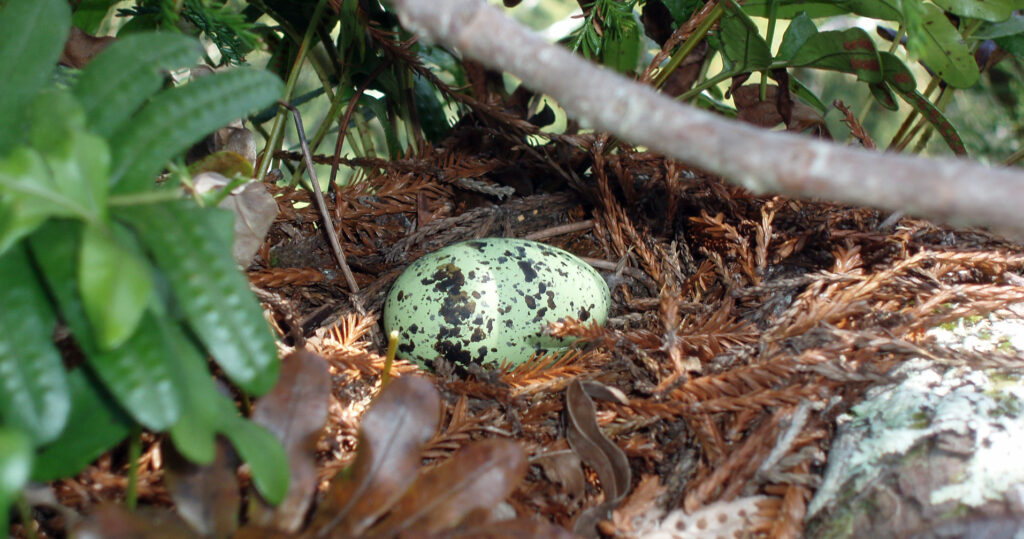Species Spotlight: Marbled Murrelet
(Brachyramphus marmoratus)

A marbled murrelet in flight (Photo by Mike Danzenbak)
Washington’s coastal forests hold some of the last remaining intact habitat for endangered marbled murrelet (Brachyramphus marmoratus) in the Pacific Northwest. These unassuming seabirds, which are the size of a robin, spend most of the year foraging in shallow waters just off the Pacific Coastline. But come early April, marbled murrelets begin to leave the ocean behind and travel into the shady coastal forests in search of the perfect breeding grounds: old growth trees.
The birds require wide, mossy branches deep within the forest canopy where they can lay a single egg and raise their young safe from predators. Two centuries ago, these habitat conditions were abundant in the Pacific Northwest, but marbled murrelet populations have declined significantly due to increased deforestation, habitat fragmentation, nest predation, and marine disturbances like gillnets, oil spills, and climatic changes in ocean conditions, which affect the abundance of fish that they forage.

A marbled murrelet nest in a tree branch depression (Photo courtesy of the National Park Service)
Throughout the coast ecoregion, our stewardship work, (as you can read on page 4 of this Fieldbook issue) often focuses on accelerating older forest conditions through restoration, with the goal of protecting and/or improving marbled murrelet habitat.
“Marbled murrelet are extremely difficult to track and see, but their presence is a good indicator of healthy forest conditions,” said Coast Region Stewardship Manager Austin Tomlinson. “Replicating their habitat conditions is not accomplished overnight. It can take decades, if not centuries, to show results.”
Fast Facts
In 1992, marbled murrelets were federally listed as threatened under the Endangered Species Act. They were uplisted to endangered in Washington in 2016 and in Oregon in 2021.
They travel up to 50 miles inland to nest in mature or old-growth forests, where they lay a single egg each year in tree depressions covered in moss and lichen.
Marbled murrelets can fly up to 100 miles per hour and have the ability to dive up to 100 feet in search of prey.
Pairs establish long-term bonds and fidelity to nesting areas and nest trees. They also share egg incubation and feeding duties.
This story is part of our Spring/Summer 2025 Fieldbook. Read more stories from this Fieldbook issue here.